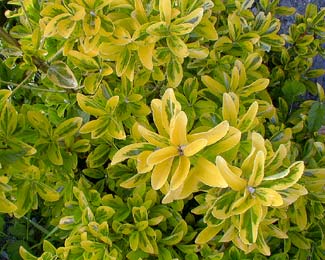Eriobotrya
This is an evergreen tree, known as the Loquat, valued for its fruit and decorative foliage and flowers. A native of China and Japan, it will grow at least 20 feet high. Their leaves are 9 to 12 inches long and 3-5 inches wide. They are green on top and grayish or brown underneath. When they are young they are covered with gray fuzz. They bear small, white flowers followed by an edible, yellow fruit. Loquats flower in autumn or early winter and their fruits ripen in late winter or spring. The fruit contains 2-4 dark brown seeds that are half an inch or so long. Since they produce their flowers and fruit during the fall and winter months, they can only be grown in areas with warm climates, such as Florida and California. The fruits can be used fresh and in preserves, pies, and jellies.
Pot Cultivation
Loquats may be grown on several different kinds of soil, although, light, loamy soil is the best. They should be planted 25 feet apart. They are also easily grown in pots in a greenhouse or other light place that has a constant temperature on winter nights of 40-50 degrees with the daytime temperature being a little warmer. They should be provided with a rich, coarse, soil that has adequate drainage. They needs to be kept continuously moist, but not saturated. From spring through fall, weekly doses of a dilute liquid fertilizer are beneficial. On sunny days, it would be advantageous to spray the trees with clear water. Repotting, if necessary, should be completed in late winter.
Propagation
These trees can easily be grown from seed but then they're only really good for ornamental value, their fruits being insignificant. Improved trees are achieved by grafting on seedling stocks, using the side graft. For the best results, this should be accomplished before new growth starts in the spring. Good varieties to use are Advance, Champagne, Oliver, Pineapple and Thales.
 |
| E. japonica. |
VARIETIES
E. japonica.





